
The Benefits of In-House Accounting
 Do you currently outsource your business’s accounting to a third party? You aren’t alone. Statistics show that over one-third of all business owners outsource their accounting. In-house accounting, however, offers several key advantages. Rather than outsourcing it, you may want to perform your business’s accounting in house for the following reasons.
Do you currently outsource your business’s accounting to a third party? You aren’t alone. Statistics show that over one-third of all business owners outsource their accounting. In-house accounting, however, offers several key advantages. Rather than outsourcing it, you may want to perform your business’s accounting in house for the following reasons.
Saves Money
You can save money by performing your business’s accounting in house. Outsourcing accounting services to a third party can be expensive. Many professional accountants charge up to $200 per hour. By having an in-house accounting team, you don’t have to pay these fees. All of the money that you save on accounting can then be reinvested back into your business.
Better Control
You’ll have more control over your business’s books and financial records with in-house accounting. You can set up accounting processes and procedures that are custom-tailored to your business, allowing you to better manage your business’s books and financial records. When outsourcing your business’s accounting, on the other hand, you’ll have to rely on a third party. The accountant may or may not use your preferred processes and procedures.
Ultra-Fast Response Times
In-house accounting offers ultra-fast response time. With an in-house accounting team, your business can quickly respond to financial issues. The in-house accounting team can analyze financial records to identify and fix discrepancies on the fly. If you outsource your business’s accounting, you can expect longer response times. Professional accountants are oftentimes busy with other clients. You’ll have to wait until the accountant is available to look at your business’s books and financial records. Even then, it may take days if not weeks for the professional accountant to resolve the issue.
Security
Security is another benefit of in-house accounting. By having an in-house accounting team, you can ensure the confidentiality and security of your business’s financial data. You have greater control over who has access to your financial information, which can reduce the risk of data breaches and cyber attacks. This high level of security can help protect your business from financial and reputational damage.
Improved Forecasting
Improved forecasting is a benefit of in-house accounting. Having an in-house accounting team can improve your company’s ability to create forecasts. The in-house accounting team can use historical data and trends to create more accurate financial projections. Using these projections, you can make well-informed decisions about future investments and expenses.
What are your thoughts on in-house accounting? Let us know in the comments section below!

FIFO vs LIFO: What’s the Difference?
 If your business manages inventory, you’ll need to implement an inventory accounting system. Inventory accounting systems are used to determine the cost of goods sold (COGS) and the value of inventory. There’s first in, first out (FIFO), and there’s last in, first out (LIFO). What’s the difference between these two inventory accounting systems, and which one should you use for your business?
If your business manages inventory, you’ll need to implement an inventory accounting system. Inventory accounting systems are used to determine the cost of goods sold (COGS) and the value of inventory. There’s first in, first out (FIFO), and there’s last in, first out (LIFO). What’s the difference between these two inventory accounting systems, and which one should you use for your business?
What Is FIFO?
FIFO is an inventory accounting system that assumes the first products purchased from a vendor or manufacturer are the first products sold. With FIFO, you use the cost of the oldest products in your business’s inventory to calculate COGS, and you use the cost of the newest products to calculate the value of your business’s ending inventory. The FIFO accounting system is commonly used when a business wants to report a higher net income, as it results in a lower COGS and higher ending inventory value.
What Is LIFO?
LIFO is an inventory accounting system that assumes the last products purchased from a vendor or manufacturer are the first products sold. The cost of the newest products in your business’s inventory are used to calculate COGS. Conversely, the cost of the oldest products are used to calculate the value of your business’s ending inventory. The FIFO accounting system is often used when a business wants to minimize taxes, as it typically results in a higher COGS and lower ending inventory value.
Differences Between FIFO and LIFO
Two of the most common inventory accounting systems are LIFO and FIFO. While used for similar purposes, though, they aren’t the same. FIFO uses the oldest inventory products or items to calculate COSTS, whereas LIFo uses the newest inventory products or items to calculate COGS. And FIFO uses the newest inventory products or items to calculate the value of ending inventory, whereas LIFO uses the oldest inventory products or items to calculate the value of ending inventory.
There are tax implications associated with FIFO and LIFO. Because LIFO can result in a lower net income, it can result in lower taxes. Not all businesses, however, are allowed to use LIFO for tax purposes, and some countries may prohibit the use of LIFO altogether. Under the Generally Accepted Accounting Principles (GAAP), for instance, only LIFO is allowed. If your business uses the GAAP, you should choose LIFO.
Did this tutorial work for you? Let us know in the comments section below!
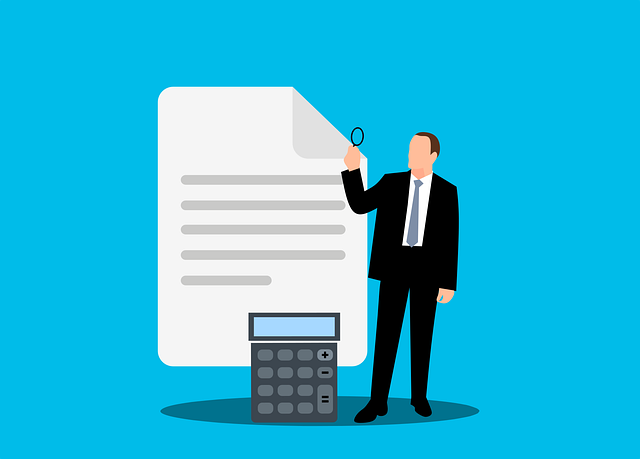
What Is the Double-Entry Bookkeeping Method and How Does It Work
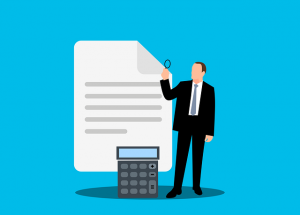 There are two primary bookkeeping methods used in accounting: single-entry and double-entry. While single-entry is typically the easiest, some businesses prefer the double-entry bookkeeping method. What is the double-entry bookkeeping method, and how does it work?
There are two primary bookkeeping methods used in accounting: single-entry and double-entry. While single-entry is typically the easiest, some businesses prefer the double-entry bookkeeping method. What is the double-entry bookkeeping method, and how does it work?
What Is the Double-Entry Bookkeeping Method?
The double-entry bookkeeping method is a business accounting method that records each financial transaction in at least separate accounts: a debit account and a credit account. It’s based on the fundamental accounting equation, which states that assets must equal liabilities plus equity. Every transaction affects at least two accounts with the double-entry bookkeeping method. The total debits must always equal the total credits, ensuring that the business’s books are always in balance.
How Does the Double-Entry Bookkeeping Method Work?
The double-entry bookkeeping method begins with identifying the transaction. Whether it’s a sale, purchase or receipt, the transaction must be identified. You can then determine which accounts are affected by the transaction. As previously mentioned, all transactions affect at least two accounts, including a debit account and a credit account.
Now you can record the transaction. This involves making entries in the general ledger. The general ledger typically has separate accounts for assets, liabilities, equity, revenue and expenses. When using the double-entry bookkeeping method, you’ll need to record the transaction in a debit account and a credit account.
The Benefits of the Double-Entry Bookkeeping Method
Unless you’ve used it in the past, you might be wondering what benefits the double-entry bookkeeping method offers. One of the main benefits of using the double-entry bookkeeping method is accuracy. Errors can occur with all accounting methods, but they are less likely to occur with the double-entry bookkeeping method. This is because each transaction is recorded twice, which helps to ensure that your business’s books are always in balance.
The double-entry bookkeeping method offers protection against fraud. With each transaction affecting at least two accounts, you can use it to identify both fraud and errors. It’s easier to identify discrepancies and inconsistencies when using the double-entry bookkeeping method. If you’re worried about fraud or errors, you may want to choose this alternative accounting method for your business.
Another reason to use the double-entry bookkeeping method is transparency. It offers a clear and comprehensive picture of your business’s financial health. You can use the double-entry bookkeeping method to closely track your business’s revenue, expenses, assets and liabilities.
Have anything else that you’d like to share? Let us know in the comments section below!

Amortization: Everything You Need to Know About This Accounting Process
 When researching accounting processes, you may encounter amortization. It’s commonly used to distribute the cost of business-related assets over time. Amortization, however, isn’t the same as depreciation. If you’re thinking about using it, there are several things you need to know about amortization and how it works.
When researching accounting processes, you may encounter amortization. It’s commonly used to distribute the cost of business-related assets over time. Amortization, however, isn’t the same as depreciation. If you’re thinking about using it, there are several things you need to know about amortization and how it works.
What Is Amortization?
Amortization refers to the process of gradually expensing the cost of an intangible asset over its useful life. This is similar to depreciation, which refers to the gradual expensing of the cost of tangible assets.
Depreciation revolves around tangible assets. Amortization, on the other hand, revolves around intangible assets. To expense the cost of a tangible asset, you should use depreciation. For intangible assets, you should use amortization.
How Does Amortization Work?
Intangible assets include patents, trademarks, copyrights and goodwill, which are often long-term assets that provide value to a business over a period of years. Rather than recording the full cost of these assets as an expense in the year in which they are purchased, businesses record a small portion of the cost each year as an amortization expense.
The amortization expense is calculated by dividing the total cost of the asset by its estimated useful life. For example, if a business spends $100,000 on a patent that has an estimated useful life of 10 years, the business would record an annual amortization expense of $10,000 per year for a period of 10 years.
Benefits of Amortization
Amortization helps to ensure that the total cost of intangible assets is spread over their useful lives. This allows for more accurate financial reporting that reflects the true cost of the respective assets over time.
Another benefit of amortization is better budgeting. By spreading the cost of an intangible asset over its useful life, businesses can better plan for expenses and budget accordingly. Businesses can make smarter decisions regarding how to spend their capital and allocate their resources.
There are even tax benefits associated with amortization. Amortization expenses can typically be deducted from taxable income, which in turn reduces the tax liability of businesses.
If you use the Generally Accepted Accounting Principles (GAAP) standard for your business’s accounting needs, you’ll need to use amortization. Amortization is an element of the GAAP. To comply with the GAAP, you’ll need to expense the cost of intangible assets over their useful lives.
Have anything else that you’d like to add? Let us know in the comments section below!
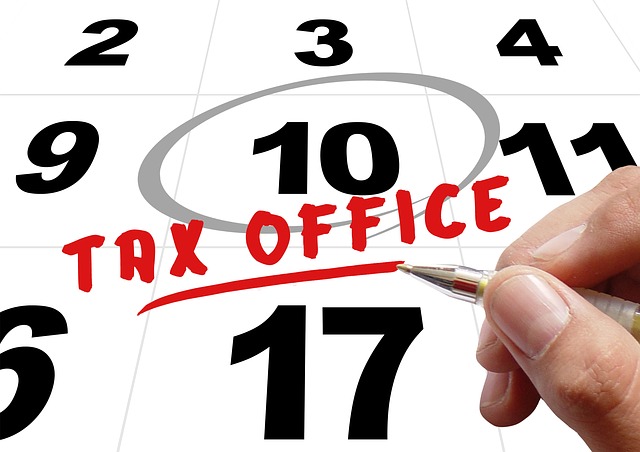
How Does a Tax Extension Work? Get the Facts
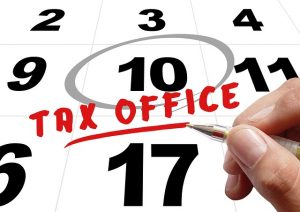 Are you running late on your taxes? While tax laws in the United States change from year to year, the Internal Revenue Service (IRS) typically requires Americans to file their taxes by April 15. Some taxes, however, are more complex than others. Even if you’re unable to prepare and file your taxes by the due date, however, you can file an extension.
Are you running late on your taxes? While tax laws in the United States change from year to year, the Internal Revenue Service (IRS) typically requires Americans to file their taxes by April 15. Some taxes, however, are more complex than others. Even if you’re unable to prepare and file your taxes by the due date, however, you can file an extension.
The Basics of a Tax Extension
A tax extension is exactly what it sounds like: an extension of your taxes. It extends the due date of your taxes. By filing a tax extension, you’ll have more time to prepare and file your taxes.
How a Tax Extension Works
There are a few different ways that you can file a tax extension. The IRS offers a Free File tool for tax extensions. Regardless of your income, you can use this online tool to extend the due date of your taxes. Alternatively, you can file a tax extension when paying some or all of your estimated income tax. There’s an option to file a tax extension when submitting estimated tax payments using Direct Pay, EFTPS or a credit or debit card.
Whether you use the Free File tool or the estimated payments option, you’ll have an extra six months to prepare and file your taxes after filing an extension. As previously mentioned, April 15 is typically the date on which taxes are due. A tax extension will extend the due date of your taxes to October 15.
What’s the Penalty for Filing a Tax Extension?
There’s no penalty for filing a tax extension. With that said, you’ll still have to pay all of your taxes by the normal due date, which is typically April 15.
A tax extension only extends the date by which your taxes must be filed; it doesn’t extend the date on which your tax liabilities must be paid and satisfied. If you owe money with your taxes, you must pay the IRS by the normal due date of April 15, regardless of whether you file an extension.
You should still consider filing a tax extension if you’re unable to submit your taxes by the normal due date. With a tax extension, you won’t be slapped with a late filing penalty. If you owe any money, though, you’ll need to pay the IRS by the normal due date. A tax extension works by pushing back the date by which your taxes must be filed. Contrary to common belief, it doesn’t extend the due date of tax payments.
Have anything else that you’d like to add? Let us know in the comments section below!

What Is an Audit Trail in Accounting?
 Does your business have an audit trail? Businesses of all shapes and sizes can benefit from an audit trail. You can use it to cut unnecessary expenses, improve cash flow and prepare your business’s taxes. What is an audit trail exactly, and how does it work?
Does your business have an audit trail? Businesses of all shapes and sizes can benefit from an audit trail. You can use it to cut unnecessary expenses, improve cash flow and prepare your business’s taxes. What is an audit trail exactly, and how does it work?
Overview of Audit Trails
An audit trail is a chronological record of a business’s financial transactions, including receipts, sales invoices, bank statements and other documents. It’s designed to track the flow of money from the source to the financial statements. When viewing an audit trail, you’ll see your business’s financial transactions as well as supporting information about those transactions.
How Audit Trails Work
Audit trails work by providing information about financial transactions. There are different types of audit trails, some of which contain more information about financial transactions than others. A complete audit trail, for instance, may contain the time of the transaction, the parties involved (e.g. your business and a vendor or customer), the location and the amount. Other audit trails are simpler and contain less information. Regardless, all audit trails contain information about financial transactions.
Audit trails are designed to record the sequence of events in the financial transaction process. When your business receives an invoice from a supplier, for instance, the invoice is recorded in the accounts payable ledger, along with the date, amount and other relevant details.
The Importance of an Audit Trail
Some business owners assume an audit trail isn’t necessary. They believe it’s a waste of time, so they focus their time and energy elsewhere. But the truth is that all businesses can benefit from an audit trail.
An audit trail ensures the accuracy and integrity of financial information. By featuring financial transactions and supporting information, it shows that the financial transactions were properly recorded and authorized. An audit trail also allows auditors to verify the completeness of financial statements and detect any errors, fraud or irregularities.
Many businesses use audit trails internally. With an audit trail, you can go back and review all of your business’s financial transactions to ensure they are correct. Some financial transactions may contain discrepancies. It only takes a single discrepancy to throw off your entire business’s books. An audit trail can help you can find and fix discrepancies so that your business has cleaner books.
Did this tutorial work for you? Let us know in the comments section below!

What Does a Negative Cash Balance on a Balance Sheet Mean?
 Is your business’s balance sheet showing a negative cash balance? Of all the different accounting documents, balance sheets are among the most important. While some businesses show a positive cash balance on their balance sheet, though, others show a negative cash balance. What does a negative cash balance mean exactly?
Is your business’s balance sheet showing a negative cash balance? Of all the different accounting documents, balance sheets are among the most important. While some businesses show a positive cash balance on their balance sheet, though, others show a negative cash balance. What does a negative cash balance mean exactly?
The Basics of a Balance Sheet
To better understand what a negative cash balance means, you must familiarize yourself with the basics of a balance sheet. A balance sheet is a financial document that summarizes the financial balances of a business (or a person). It features three primary components: assets, liabilities and shareholders’ equity.
You can refer to a balance sheet to gain a better understanding of your business’s financial health during a particular period. Maybe you want to measure your business’s financial health for the previous quarter, or perhaps you want to measure your business’s financial health for last year or even five years ago. Regardless, you can generate a balance sheet for that period. The balance sheet will summarize your business’s assets, liabilities and shareholders’ equity for the specified period.
Writing Checks
One of the most common causes of a negative cash balance on balance sheets involves writing checks. If you write a check and your business doesn’t have sufficient funds in its checking account to cover it, you may end up with a negative balance.
Millions of businesses still write checks to pay for the goods and services needed to carry out their operations. When writing checks, though, you should check to ensure that you have the appropriate funds to cover them. If there are insufficient funds in your business’s checking account, you may end up with a negative balance on your business’s balance sheet.
Another instance in which writing checks may lead to a negative cash balance is if you rewrite a check but fail to void the original check. A supplier, for instance, may not receive the original check that you send them, in which case the supplier may request a new check. You’ll need to void the original check so that it doesn’t throw off your business’s balance sheet. If you forget to void the original check, you may end up with a negative cash balance on your business’s balance sheet.
Have anything else that you’d like to add? Let us know in the comments section below!

Income Statement vs Cash Flow Statement: What’s the Difference?
 Income statements and cash flow statements are two common types of financial documents. You can use them to gain a better understanding of your business’s finances. While income statements and cash flow statements consist of similar information, though, they aren’t the same. What’s the difference between income statements and cash flow statements exactly?
Income statements and cash flow statements are two common types of financial documents. You can use them to gain a better understanding of your business’s finances. While income statements and cash flow statements consist of similar information, though, they aren’t the same. What’s the difference between income statements and cash flow statements exactly?
What Is an Income Statement?
An income statement is a financial document that summarizes a business’s revenues and expenses over a specific period of time — typically a month or a year. The purpose of an income statement is to show a company’s profitability for a specific period of time by revealing how much money it generated and how much money it spend during that period.
What Is a Cash Flow Statement?
Also known as a statement of cash flows, a cash flow statement is a financial document that shows the inflow and outflow of money over a specific period of time. Like with income statements, cash flow statements typically cover periods of one month or one year. The purpose of a cash flow statement is to provide insight into a business’s ability to generate and manage its cash.
Differences Between Income Statements and Cash Flow Statements
Income statements and cash flow statements are structured differently. Income statements consist of the following parts: revenue, cost of goods sold (COGS), operating expenses, operating income, gross profit and net income. They may include other revenue- and expense-related information, but these are the basic parts of a typical income statement.
Cash flow statements, on the other hand, are structured into three parts: cash flow from operating activities, cash flow from investing activities and cash flow from financing activities.
Aside from being structured differently, income statements and cash flow statements are used for different purposes. Income statements are designed to reveal how profitable a business is during a specific period of time. Cash flow statements, conversely, are designed to reveal how a business generates and manages its cash during a specific period of time.
Cash flow statements provide insight into liquidity. By generating a cash flow statement, you can see how your business spent money during the reporting period. Income statements are different in the sense that they provide insight into profitability. You can generate a cash flow statement for an overview of your business’s revenues and expenses during the reporting period.
Have anything else that you’d like to add? Let us know in the comments section below!

6 Common Payroll Accounting Mistakes to Avoid
 Payroll accounting comes with the territory of running a business. If your business has employees, you’ll need to pay them — and you’ll need to record these employee payments for both internal accounting purports and tax purposes. Mistakes can happen, however. According to the U.S. Internal Revenue Service (IRS), one-third of all employers make payroll accounting errors. Below are some of the most common payroll accounting mistakes.
Payroll accounting comes with the territory of running a business. If your business has employees, you’ll need to pay them — and you’ll need to record these employee payments for both internal accounting purports and tax purposes. Mistakes can happen, however. According to the U.S. Internal Revenue Service (IRS), one-third of all employers make payroll accounting errors. Below are some of the most common payroll accounting mistakes.
#1) Classifying Employees as Contractors
One of the most common payroll accounting mistakes is classifying employees as contractors. Also known as independent contractors, contractors are workers who provide on-demand labor for a business. They don’t follow a fixed schedule, nor are they entitled to employee benefits. Misclassifying employees as contractors is an all-too-common payroll accounting mistake.
#2) Overlooking Exempt and Nonexempt Statuses
When performing payroll accounting, you’ll need to consider whether employees have an exempt or nonexempt status. There are nuances between these two statuses. Nonexempt employees, for instance, are eligible for overtime, whereas exempt employees are not. But only employees who are aren’t paid a predetermined amount of money throughout the year are typically eligible for the nonexempt status.
#3) Unpained Training
A payroll accounting mistake that’s common among small and medium-sized businesses is unpaid training. Millions of businesses require new employees to undergo a training period. Whether the training period lasts one day or two weeks, new employees must be compensated for it.
#4) Using the Wrong Tax Rate
Many businesses make the mistake of using the wrong tax rate. Tax rates vary from year to year. Just because you used the correct tax rate for your business’s employees last year, you may need to use a different tax rate this year. As a business owner, it’s your responsibility to stay on top tax changes, including tax rates for federal income, state income, unemployment and more.
#5) Not Keeping Records
Another common payroll accounting mistake to avoid is not keeping records. Some businesses — particularly small businesses — assume that records aren’t necessary. If they only have a few employees on their payroll, they may pay their employees without keeping records. But the IRS requires all businesses, regardless of size, to maintain payroll records.
#6) Performing Payroll Accounting Manually
You shouldn’t attempt to perform payroll accounting manually. Even if your business is small with only a few employees, you should take advantage of software. Accounting software like QuickBooks supports payroll accounting. You can use it to easily handle all of your business’s payroll accounting needs.
Have anything else that you’d like to add? Let us know in the comments section below!
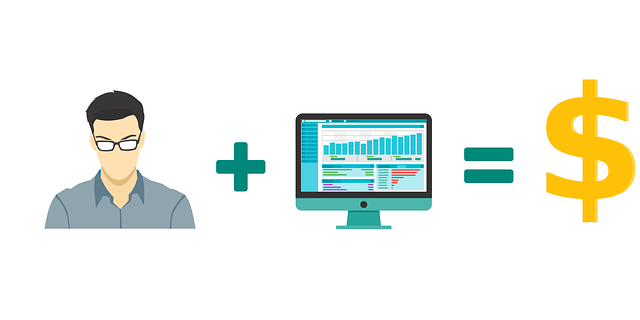
The 3 Main Parts of a Cash Flow Statement
 A cash flow statement is an important financial document used by businesses. Also known as a statement of cash flows, it provides insight into the money coming into and going out of a business. Regardless of your business’s size or operations, you may want to create a cash flow statement. You can use it to secure financing, plan a budget and more. While there are different ways to create a cash flow statement, they all revolve around three main parts.
A cash flow statement is an important financial document used by businesses. Also known as a statement of cash flows, it provides insight into the money coming into and going out of a business. Regardless of your business’s size or operations, you may want to create a cash flow statement. You can use it to secure financing, plan a budget and more. While there are different ways to create a cash flow statement, they all revolve around three main parts.
#1) Operating Activities
You’ll need to include a section for operating activities in your cash flow statement. It’s arguably the most important section in cash flow statements. As the name suggests, the operating activities section focuses on operational activities. It contains all incoming and outgoing money that’s directly associated with a business’s products or services.
Examples of operating activities include the following:
- Revenue from product or service sales
- Accounts receivable
- Employee payroll
- Rent and lease payments
- Utilities
#2) Financing Activities
In addition to operating activities, cash flow statements should contain a financing activities section. Financing activities include transactions associated with a business’s financing. If your business is financed with a loan, for instance, you’ll have to make payments to the lender. Loan payments such as this are considered financing activities. And like other financing activities, you should record them in the financing activities section of your business’s cash flow statement. If you make payments to a lender for a loan — or if a borrower makes loan payments to your business — you should record them in the financing activities section of your business’s cash flow statement.
#3) Investing Activities
Finally, the investing activities section focuses on investments. Investments, of course, will affect your business’s cash flow. You may purchase assets, such as equipment, for business. Alternatively, you may sell some of your business’s assets. These are considered investing activities, and you should record them in the investing activities of your business’s cash flow statement.
In Conclusion
They may sound complex, but cash flow statements use a relatively simple format. They feature three main parts: an operating activities section, a financing activities section and an investing activities section. The operating activities section covers all incoming and outgoing cash associated with operational activities. The financing activities section covers all incoming and outgoing cash associated with financing. And the investing activities section covers all incoming and outgoing cash associated with investments.
Have anything else that you’d like to add? Let us know in the comments section below!
